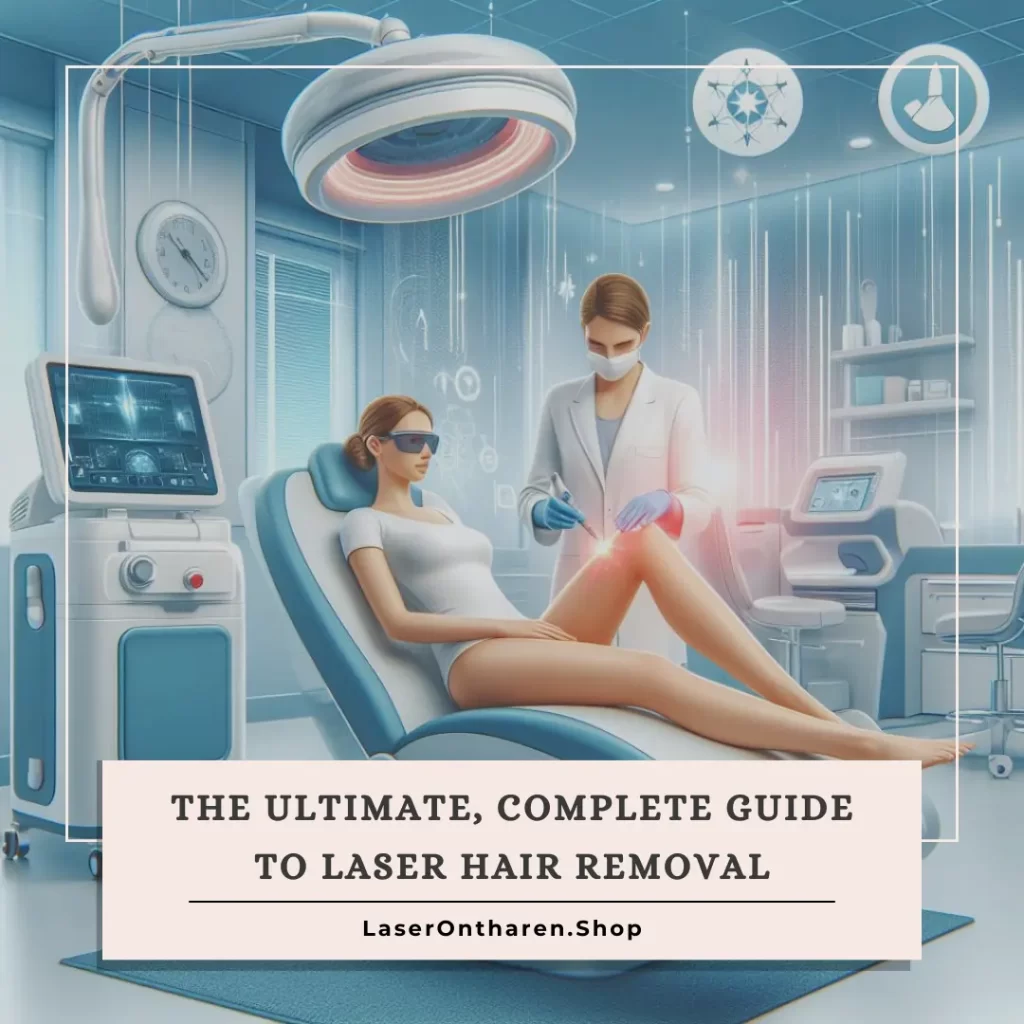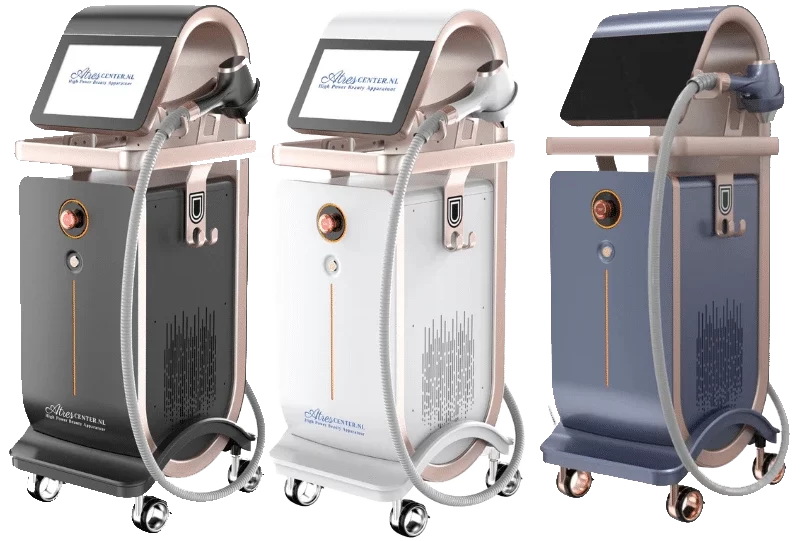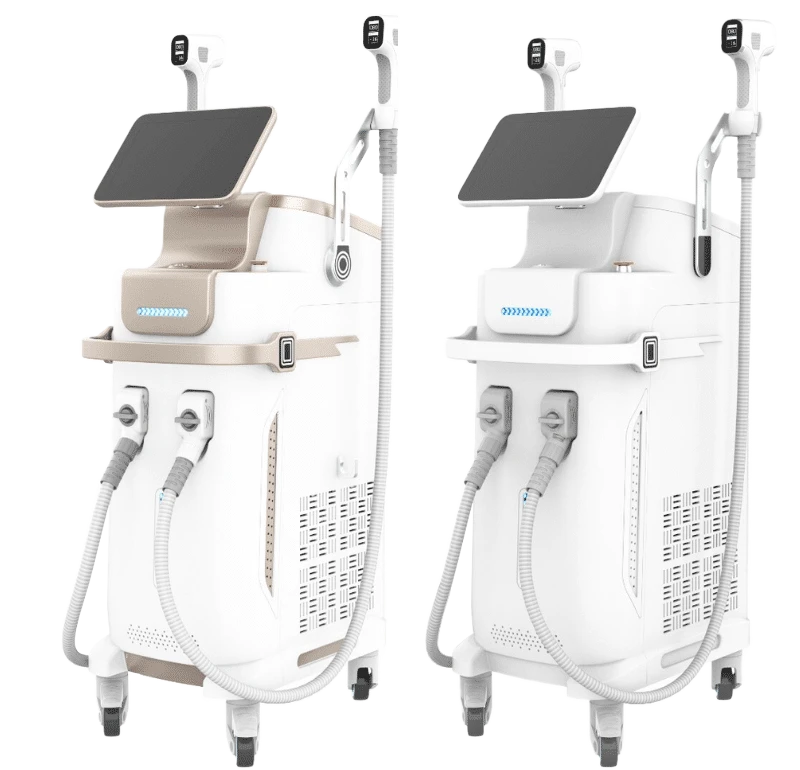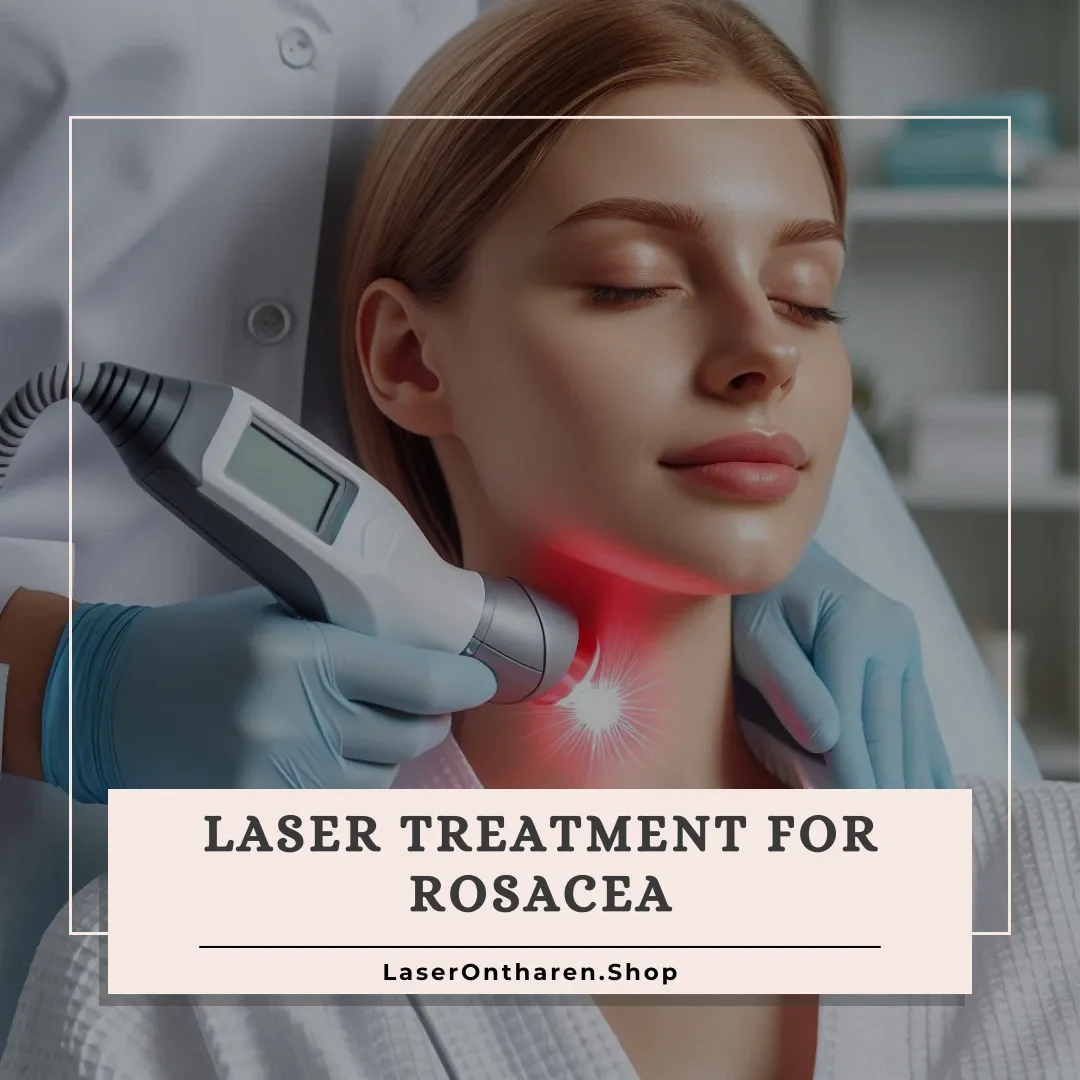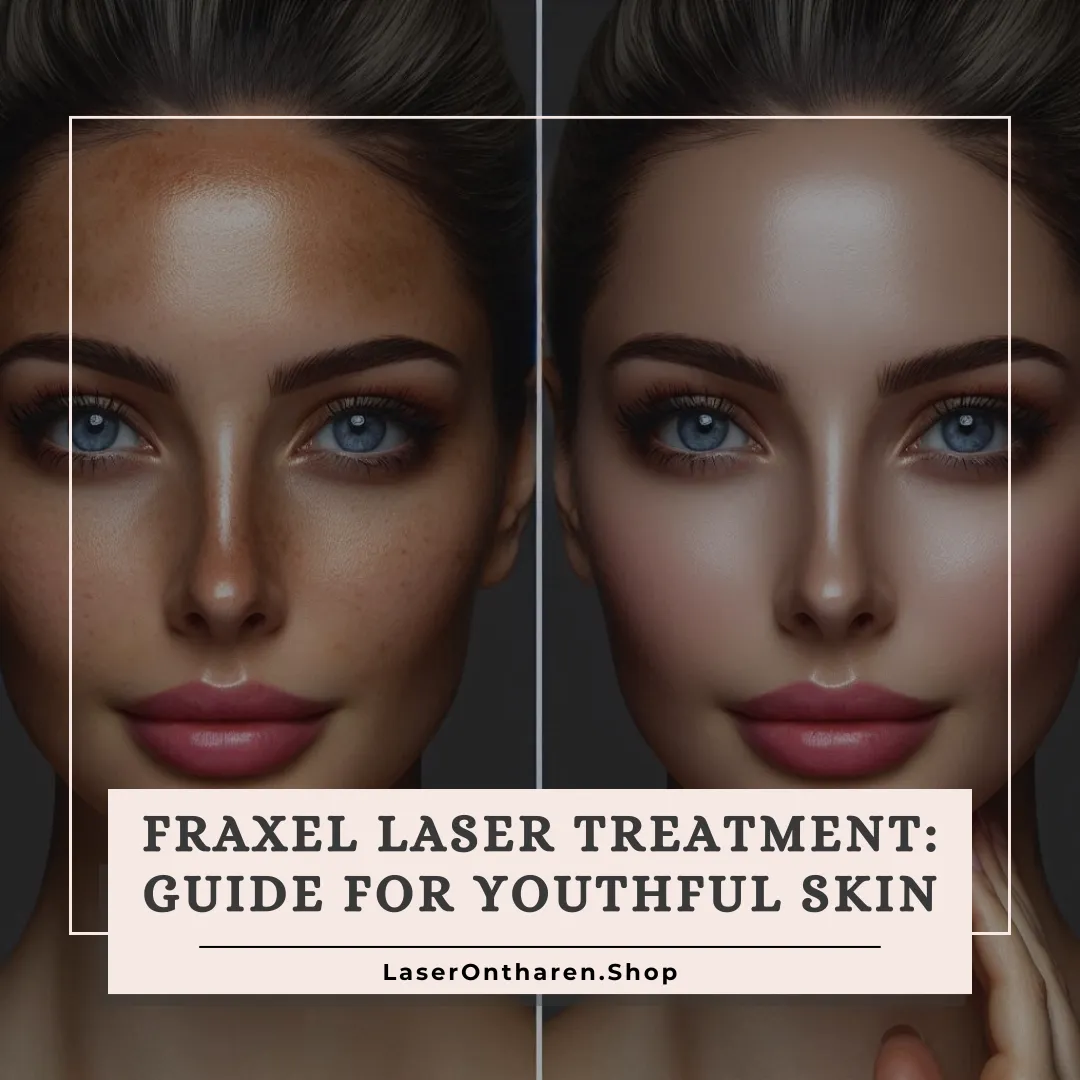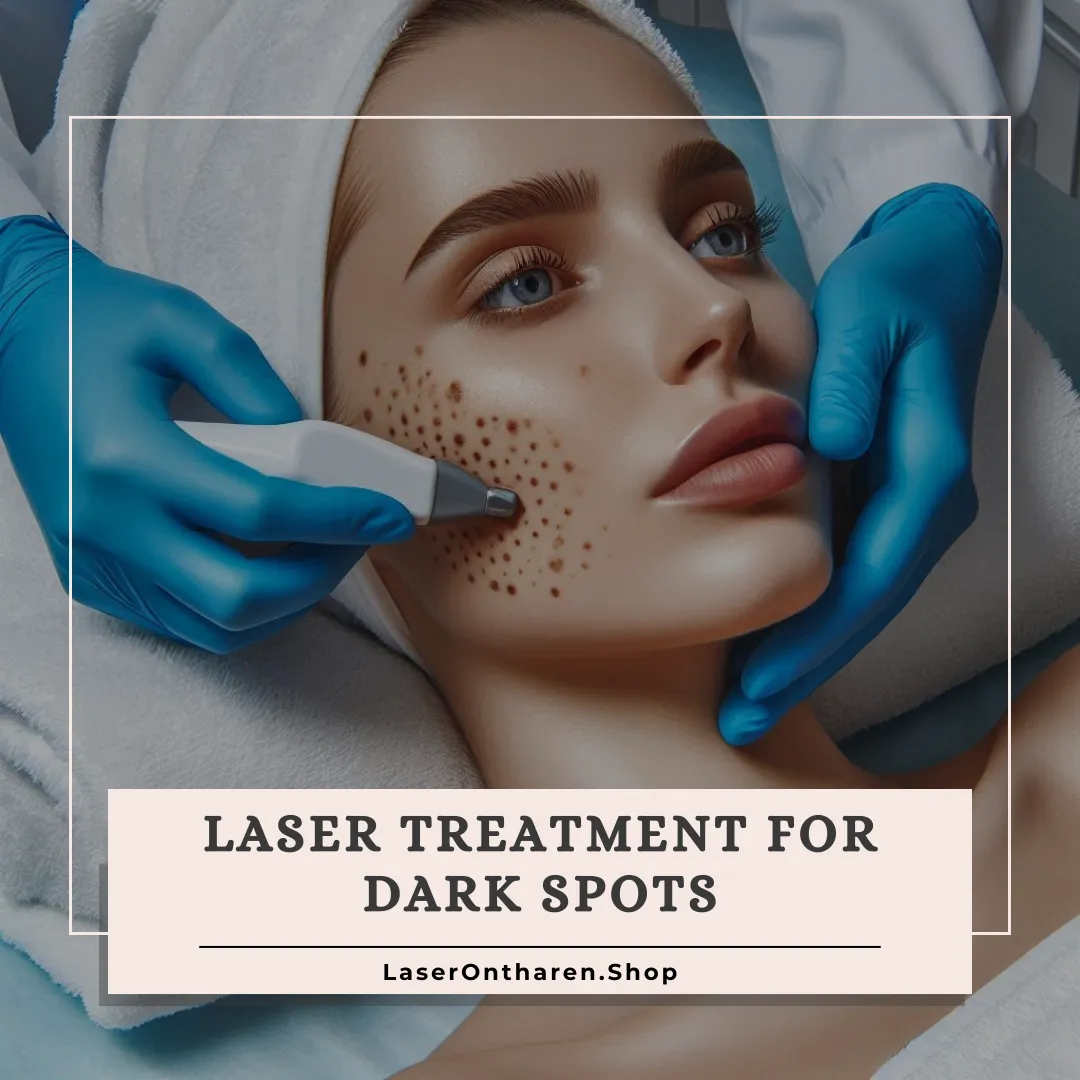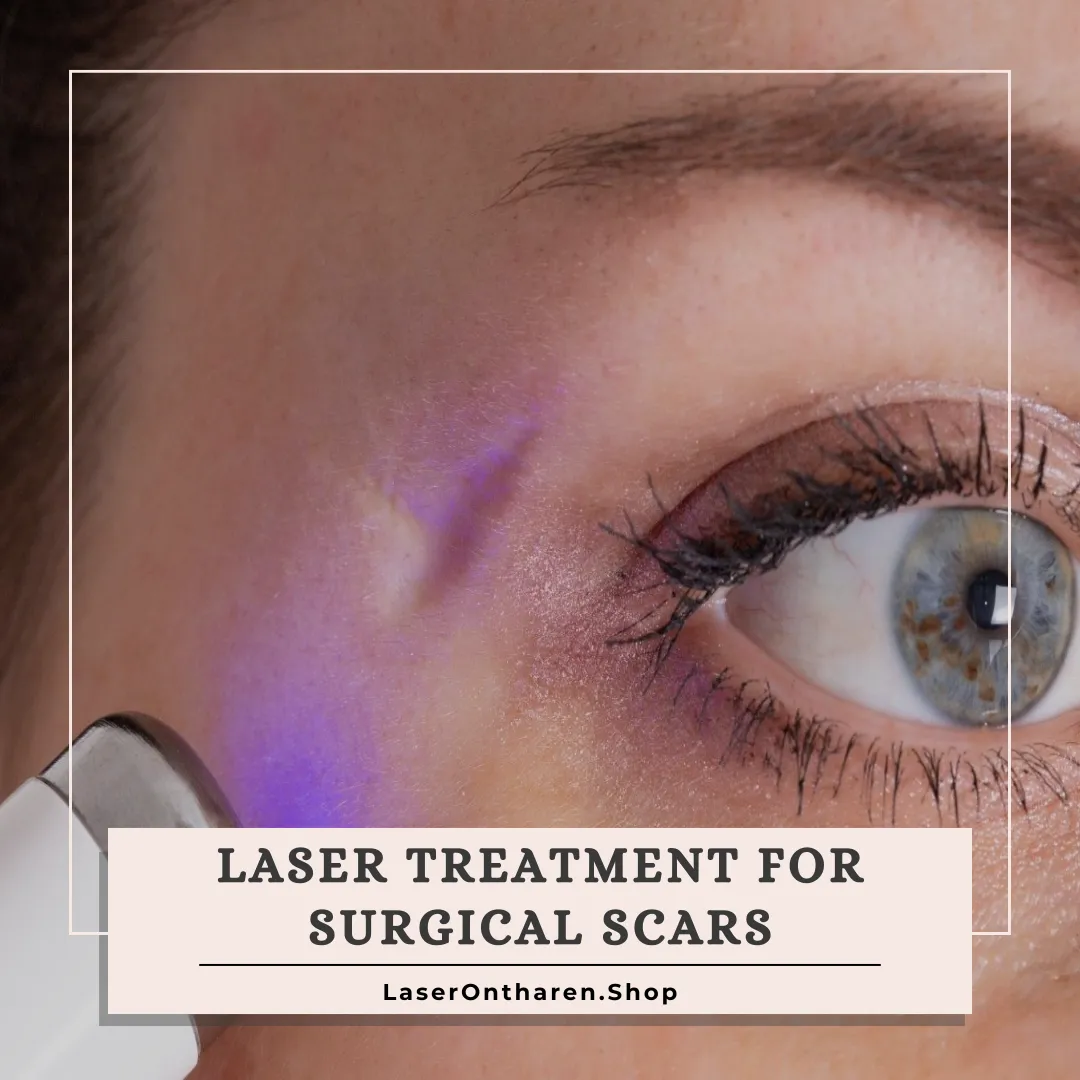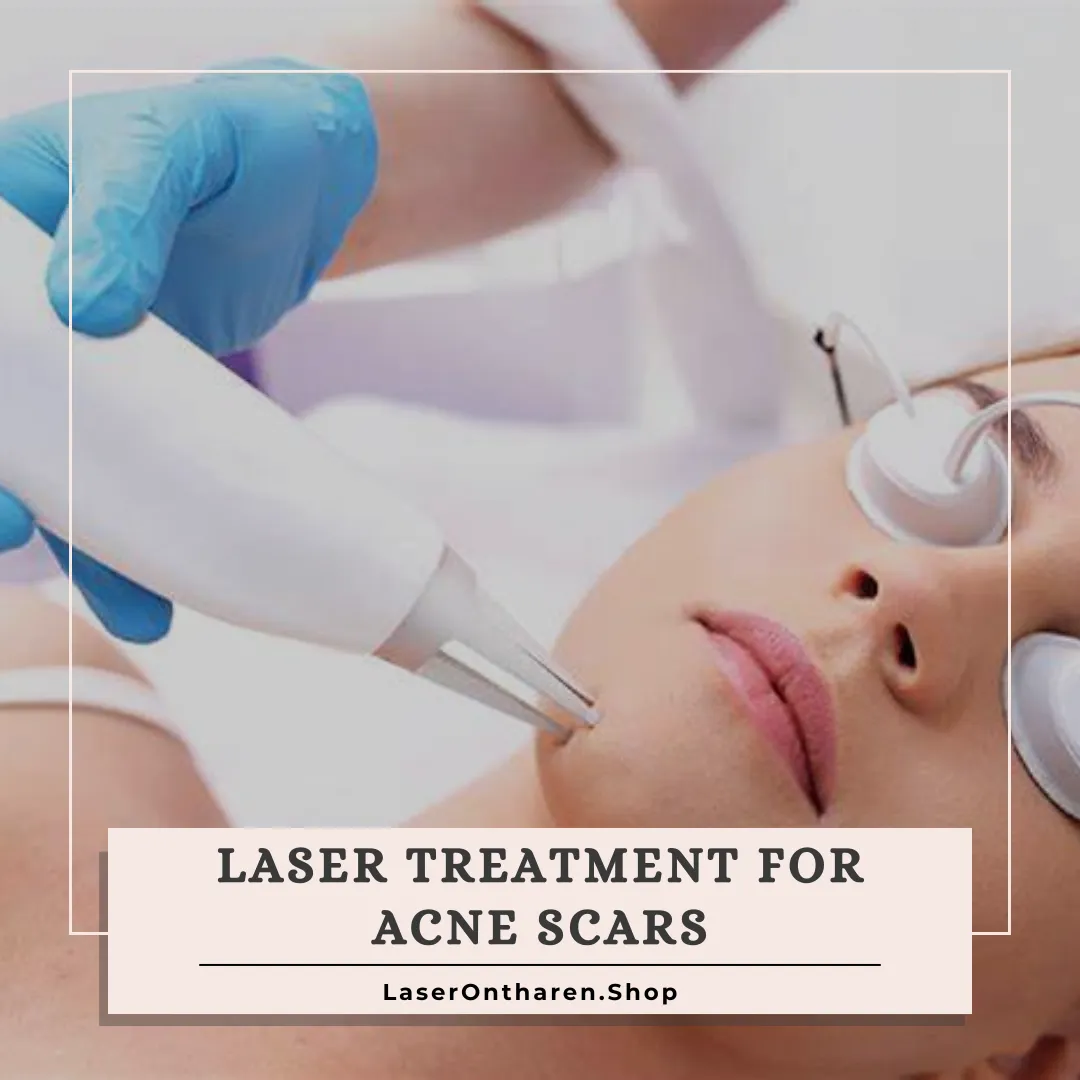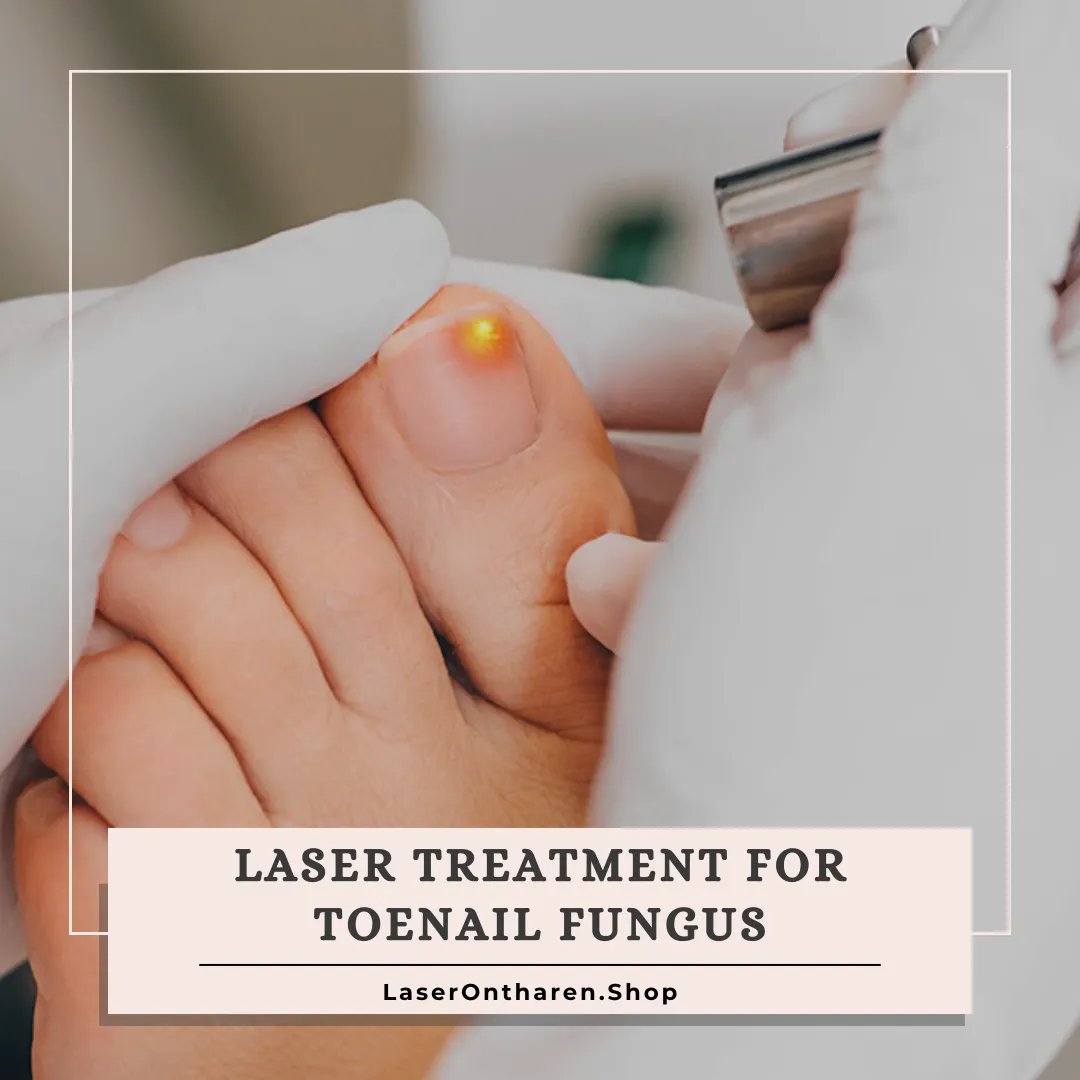Laser ontharen represents the future of hair removal techniques, offering a seamless and enduring answer to the age-old dilemma of unwanted hair.
Traditional methods like shaving, waxing, and depilatory creams have long been the go-to solutions, but they offer only temporary relief.
As our world evolves at a rapid pace, the demand for more permanent and less time-consuming options is on the rise.
Enter laser hair removal:
a revolutionary approach that promises not only efficiency but longevity in hair removal.
This advanced method stands out as a beacon of innovation in a sea of outdated techniques.
Where once temporary fixes were the norm, now laser ontharen provides a lasting solution, aligning perfectly with the fast-paced lifestyle of contemporary society.
What is Laser Hair Removal?
Laser Hair Removal is an innovative method for eliminating unwanted hair through the application of laser technology.
This technique involves various laser types, each suited to different skin types and hair characteristics.
The selection of the appropriate laser is crucial and will be discussed in detail later in this guide.
Laser Hair Removal not only offers a sophisticated solution to an age-old problem but also adapts to individual needs, ensuring optimal results.
By harnessing the power of laser beams, Laser Hair Removal effectively targets hair follicles, disrupting their growth cycle without damaging the surrounding skin.
This process marks a significant advancement from traditional methods, providing a more enduring and efficient solution for hair removal.
Got any questions about High-Power Diode Laser Ice Pro A+?
A Brief History of Laser Hair Removal
The evolution of Laser Hair Removal technology has been marked by significant milestones spanning over several decades, each contributing to the sophisticated system we utilize today.
Starting Laser Hair Removal in the 1960s
The journey began in the 1960s with the debut of Wave 1 lasers.
These early models produced a continuous light beam but lacked control, posing significant risks to skin safety.
Their impracticality for hair removal quickly became evident.
Wave 2 of Hair Removal in the 1970s
A decade later, wave 2 lasers marked a notable advancement.
These lasers could target individual hair follicles through a fiber optic probe, but complexity and regulatory hurdles led to their withdrawal from the market.
The 1980s: Refining Laser Technology
The 1980s saw the emergence of wave 3 lasers.
While they improved targeting capabilities compared to wave 2, their overall performance in Laser Hair Removal was still inadequate, leading to their eventual phase-out.
1990s: A Leap Forward in Laser Hair Removal
The 1990s were transformative, introducing wave 4 lasers.
Approved by the FDA, these lasers used a carbon-based lotion as a chromophore.
However,
despite their effectiveness, they posed a risk to surrounding cells and tissues.
Revolutionizing Hair Removal in 1997
The year 1997 was a milestone with the introduction of wave 5 lasers.
These advanced systems targeted melanin in the hair and featured built-in cooling systems, significantly enhancing safety and effectiveness.
The wave 5 lasers, widely adopted today, represent the pinnacle of Laser Hair Removal technology.
Understanding Hair Growth for Effective Laser Removal
The effectiveness of Laser Hair Removal hinges on a deep understanding of the hair growth cycle.
Each hair on our body is composed of two main parts:
The Visible Shaft and the Underlying Root
- The shaft is the part of the hair that is visible on the skin’s surface.
- Beneath the shaft lies the root, which anchors the hair into the skin.
The Role of the Hair Follicle
- At the root’s base is the hair follicle, a specialized organ responsible for producing hair.
The Three-Phase Hair Growth Cycle
Hair growth occurs in a cyclical process, encompassing three distinct stages:
- Anagen (Growth Stage): This is the active phase where the hair grows.
- Catagen (Cessation Stage): In this transitional phase, hair growth stops.
- Telogen (Rest Stage): The final stage, where the hair naturally falls out and is eventually replaced.
The Uniqueness of Hair Growth Cycles
A critical aspect of hair growth is its asynchronous nature across the human body. Not all hairs follow the same growth schedule:
- While one hair might be emerging, another could be shedding.
- This diversity in growth stages is precisely why Laser Hair Removal requires multiple sessions to effectively target hairs in their growth phase.
Understanding the Mechanics of Laser-Based Hair Reduction
At the heart of Laser-Based Hair Reduction lies the principle of SPTL (Selective Photothermolysis).
This involves using a specific light wavelength and pulse duration to target the hair effectively, minimizing damage to adjacent skin.
Transitioning from Traditional to Advanced Hair Removal Techniques
Traditional methods like shaving or waxing offered only fleeting relief from hair growth, requiring frequent repetition.
Discovering the role of Melanin, which imparts color to hair (Eumelanin for brown/black and Pheomelanin for blonde/red hair), was a game-changer in hair reduction technology.
The Science Behind Permanent Hair Reduction
A powerful, focused laser beam targets the hair. Melanin in the hair absorbs this laser light.
The absorbed energy heats the hair, leading to safe thermal damage to the hair follicle, the hair-producing structure.
This process significantly impedes future hair growth, all while ensuring the surrounding skin remains unharmed.
Got any questions about High-Power Diode Ice Laser Maxx – Double Lever?
Skin Type Suitability for Laser Hair Reduction
Laser Hair Reduction is highly effective across various skin types, with outcomes varying based on skin pigmentation.
The Fitzpatrick Colour Codes serve as an essential guide for categorizing skin types and predicting the efficacy of laser treatments.
Understanding the Fitzpatrick Skin Types
- Type I: Characterized by extreme sensitivity to the sun, this skin type usually burns but never tans, commonly seen in individuals with red hair and freckles.
- Type II: Highly sensitive to sun exposure, people with this skin type burn easily and tan minimally. This type is typical in fair-skinned, fair-haired Caucasians.
- Type III: Exhibiting moderate sun sensitivity, this group sometimes experiences sunburns and can tan to a light brown shade. It’s often observed in darker Caucasians.
- Type IV: With minimal sun sensitivity, this skin type rarely burns and tans to a moderate brown. Common among Mediterranean Caucasians and some Hispanic ethnicities.
- Type V: Those with this skin type have sun-insensitive skin, seldom burn, and tan well. This group includes some Hispanic and Black individuals.
- Type VI: Completely sun-insensitive, this skin type never burns and is deeply pigmented, typically seen in darker Black individuals.
Tailoring Laser Treatments to Skin Types
Each Fitzpatrick Skin Type responds differently to Laser Hair Reduction, influencing the treatment approach.
Understanding these skin types enables practitioners to optimize laser settings for safe and effective hair reduction, catering to a diverse range of individuals.
Laser Hair Reduction Across Different Skin Tones
The effectiveness of Laser Hair Removal varies with skin tones, influenced by the contrast between hair and skin colors.
Here’s how different skin tones respond to laser treatments:
Light Skin: Ideal Candidates for Laser Hair Reduction
Individuals with light skin are often considered ideal candidates for Laser Hair Removal.
Typically,
those with lighter skin tones may require fewer sessions compared to those with darker skin, due to the higher contrast between hair and skin color.
Medium Skin: Effective but May Require More Sessions
People with medium skin tones can also achieve good results from laser treatments.
The effectiveness largely depends on the hair’s color and texture.
Generally,
more treatments might be needed compared to those with lighter skin.
Dark Skin: Advancements in Laser Technology
Historically, dark skin was a challenging candidate for Laser Hair Removal due to low contrast and risk of skin damage.
However,
technological advancements have led to the development of specialized lasers suitable for dark skin types, making this treatment more accessible and effective for individuals with darker complexions.
How Hair Pigmentation Influences Laser-Based Hair Reduction
The success of laser-based hair reduction is closely linked to hair color, mirroring the principle of darker colors absorbing more heat. This is key in understanding why certain hair types respond better to the treatment.
Varying Hair Colors and Their Response to Laser Treatments
For those with light hair shades, such as blonde or red, the journey with laser hair reduction can be more complex.
These hair colors contain pheomelanin, which is less adept at absorbing the laser’s energy.
As a result,
individuals with lighter hair might find themselves needing more sessions, and the effectiveness can vary.
People with medium hair colors, like lighter brown, find themselves in a somewhat more favorable position for hair reduction treatments.
Though more effective than for lighter hair, the treatment may still require several sessions to achieve the desired results due to the intermediate level of pigment.
Dark hair is the ideal candidate for effective laser-based hair reduction.
The abundance of eumelanin in black or dark brown hair enhances the absorption of the laser’s energy, leading to more successful and efficient treatments.
A notable point is that laser treatment for hair reduction is less effective for white or grey hair.
The lack of pigment in these hair colors means they don’t absorb the laser energy, making the process less effective.
Got any questions about High-Power Diode Laser Ice Pro A+?
Determining the Number of Treatments for Effective Hair Depilation
The extent of treatments necessary for successful hair depilation with laser technology varies based on several factors including the area under treatment, along with individual skin and hair characteristics.
Generally, the range of required sessions falls between 4 and 12.
This variability is largely due to the natural growth cycle of human hair.
The Hair Growth Cycle’s Impact on Laser Treatments
Human hair growth occurs in three distinct phases:
- the anagen or active growth stage
- catagen or transition phase
- telogen or resting phase.
Laser treatments are most effective during the anagen stage when hair is in its active growth.
Considering that approximately 90% of hair follicles are in the anagen phase at any given time, targeting them during this stage is crucial for successful hair depilation.
To ensure comprehensive coverage and effectiveness, a full series of treatments is often necessary.
This approach guarantees that each hair follicle is adequately targeted during its active phase, which is key in minimizing future hair growth.
Customizing Treatment Plans for Individual Needs
Understanding that each person’s hair growth is unique, treatment plans are tailored to individual requirements.
This personalized strategy not only enhances the effectiveness of the hair depilation process but also ensures that the specific needs and characteristics of each client are adequately addressed.
Understanding the Timing Between Laser Hair Removal Sessions
After you’ve undergone a laser hair removal session, there’s a specific waiting period before you can see the full effect and before the next session.
Typically, it takes about two weeks for the treated hairs to shed from your skin.
Following this shedding phase, you might start noticing hair regrowth around the fourth week.
This cycle means that your subsequent laser treatment is usually scheduled for every six weeks.
It’s important to note that this timing can differ based on the area being treated.
The goal is to allow your skin to recover and the hair to enter the right growth phase for the next session.
Is It Advisable to Have Laser Treatments Every Two Weeks?
Opting for laser treatments every two weeks might seem like a way to speed up the process, but it’s not as effective as you might hope.
The reason lies in the hair growth cycle.
For laser hair removal to be most effective, it needs to target hairs in the anagen phase, which is the active growth stage.
By scheduling sessions too close together,
you risk treating hairs that aren’t in the anagen phase yet, leading to less effective results.
The standard six-week interval is designed to align with your hair’s natural growth cycle, ensuring each session targets the maximum number of hairs in the optimal phase for removal.
Duration of a Typical Laser Hair Removal Session
When you’re considering laser hair removal, one of the common questions is about the time commitment for each session.
On average, you can expect a session to last about 30 minutes.
However,
this duration isn’t set in stone—it can vary quite a bit depending on a couple of key factors.
Factors Influencing Session Length
- Treatment Area Size:
- The area of your body being treated plays a significant role in how long the session takes.
- For larger areas, like the back or legs, you might be looking at up to an hour per session.
- Conversely, if you’re getting a smaller area treated, like the upper lip or chin, the session could be much shorter, possibly just a few minutes.
- Your Hair Type:
- The nature of your hair, including its thickness and density, can also impact the session duration.
- Different hair types might require more or less time under the laser for effective results.
What to Expect in Your Session
Regardless of the session length, the aim is to ensure that the treatment is thorough and effective, while also being as comfortable as possible for you.
Whether it’s a quick touch-up on a small facial area or a more extensive session for larger body parts, the focus is on delivering optimal results tailored to your needs.
Popular Treatment Areas for Laser Hair Removal
Laser hair removal is a versatile treatment that can be applied to both facial and body hair.
It’s designed to target virtually any area that experiences unwanted hair growth, offering a solution for those seeking smoother, hair-free skin.
Top 5 Areas Women Often Choose for Laser Hair Removal
Women typically opt for laser hair removal in areas where hair growth is either unwanted or requires frequent maintenance.
The most common areas include:
- Upper Lip:
A key area for facial hair removal, offering a smooth, clean look. - Underarms:
Perfect for those seeking a long-term solution to underarm hair maintenance. - Bikini Line:
An ideal choice for a clean and groomed appearance in swimwear. - Stomach:
Targeting unwanted hair for a smoother abdominal area. - Legs:
Full leg treatments provide a lasting solution to regular shaving.
Top 5 Laser Hair Removal Areas for Men
Men are increasingly turning to laser hair removal to manage or eliminate hair in certain areas.
The most popular choices include:
- Sideburns: For a well-groomed facial appearance with minimal maintenance.
- Back: Addressing one of the more challenging areas to manage hair growth.
- Stomach: A choice for men looking to reduce or remove abdominal hair.
- Arms: Perfect for those preferring a sleek, hair-free look on their arms.
- Buttocks: Gaining popularity for both hygiene and aesthetic reasons.
Got any questions about High-Power Diode Ice Laser Maxx – Double Lever?
Getting Ready for Your Laser Hair Removal Session
Embarking on your laser hair removal journey involves a bit of preparation to ensure the best possible results.
Here’s what you should consider doing before your first session:
Initial Consultation: The First Step
Understanding the Process: It’s crucial to start with a consultation.
Chat with a dermatologist to grasp the ins and outs of the procedure.
This includes understanding how it works, potential side effects, and determining if your hair and skin type make you a suitable candidate.
The Importance of a Patch Test
Tailoring the Treatment: Before diving into a full course of treatments, a patch test is essential.
This test adjusts the laser’s intensity to your specific needs and identifies any potential side effects.
Safety First: A patch test ensures that if any reactions occur, they affect only a small area.
It’s a crucial step in customizing the treatment to your skin and minimizing risks.
Skin Care Before the Treatment
Natural Skin is Key: Keep your skin in its natural state.
Avoid tanning beds and direct sun exposure for about a month to six weeks prior to your treatment.
This also applies to fake tan products – let them fade completely before your session.
Hair Removal Restrictions: For the laser to work effectively, it needs to target hair in the follicle.
Therefore, avoid waxing, plucking, tweezing, or threading for about 3–4 weeks before your appointment.
For facial treatments,
a shorter window of 2 weeks is usually sufficient due to faster hair regrowth in that area.
Shaving is acceptable as it doesn’t remove hair from the follicle.
Avoid Hair Bleaching: Bleaching alters hair color, impacting the laser’s effectiveness, so it’s best to refrain from this practice before your sessions.
Preparing Your Skin on the Day
Clean and Clear: On the day of your treatment, make sure your skin is free from creams, lotions, and cosmetics.
A clean canvas ensures better laser interaction with the hair follicles.
Post-Treatment Care for Laser Hair Removal
Proper aftercare is crucial in maximizing the benefits of your laser hair removal treatment.
Here’s a guide on what to do following your appointment to ensure the best possible results.
Immediate Aftercare: Managing Initial Reactions
Skin Reactions: It’s common to notice some redness and bumpiness in the treated area right after the session.
Typically, this subsides within 2–3 hours, but for those with sensitive skin, it might take a day or two.
Soothing Techniques: If you feel any discomfort, a cold compress can be very effective.
Some after-sun treatments might also help, but it’s always best to consult your clinician before applying anything.
Protecting Your Skin from the Sun
Minimize Sun Exposure: Post-treatment, your skin will be more susceptible to sun damage.
It’s advisable to limit your time in direct sunlight.
Use Sunscreen: Applying sunscreen is essential.
Opt for a product with an SPF of 25 or higher and make it a part of your daily routine, especially during the course of your treatments.
Taking Care of the Treated Area
Avoid Irritation: Resist the urge to scratch or pick at the treated area. Keeping the area untouched as much as possible helps in the healing process.
Gentle Touch: If you need to touch the area, do so gently and avoid any harsh rubbing or scrubbing.
Got any questions about High-Power Diode Laser Ice Pro A+?
Side Effects of Laser Hair Removal: What to Expect
Laser hair removal is a safe and FDA-approved procedure, especially when performed by experienced clinicians.
However, as with any cosmetic treatment, understanding potential side effects is important for a well-informed experience.
Common and Temporary Side Effects
After a laser hair removal session, it’s normal to notice some redness and tingling of the skin, much like the sensations after waxing.
These reactions are usually mild and subside quickly.
Itching might also occur but is typically short-lived.
In some cases,
temporary side effects such as slight swelling or, rarely, skin blistering might appear.
These are uncommon, especially with modern laser systems equipped with cooling mechanisms.
Hyperpigmentation, a temporary darkening of the skin, can also occur, though it’s more prevalent in those with darker skin tones.
Special Considerations
For individuals prone to herpes outbreaks, laser hair removal might trigger a flare-up.
This risk can often be managed with antiviral medication.
Additionally,
those with a history of abnormal scarring should discuss this with their clinician to assess suitability for the treatment.
Dietary Factors
An interesting aspect to consider is diet, particularly the intake of Beta Carotene – the compound responsible for the orange color in many fruits and vegetables, such as carrots and sweet potatoes.
Excessive Beta Carotene in the body can affect laser treatment effectiveness as it deposits in the skin, absorbing some of the laser energy intended for the hair follicles.
Therefore, moderating Beta Carotene consumption is recommended prior to undergoing laser treatment.
